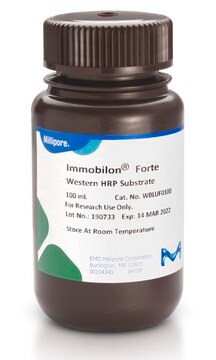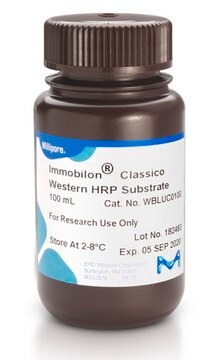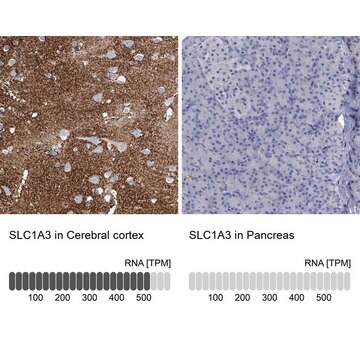MABS1259
Anti-CYP51A1 Antibody, clone N6-P2H5*G8
clone N6-P2H5*G8, from mouse
Synonym(s):
Lanosterol 14-alpha demethylase, CYP51A1, CYPL1, CYPLI, Cytochrome P450 51A1, Cytochrome P450, family 51, subfamily A, polypeptide 1, Cytochrome P450-14DM, Cytochrome P45014DM, Cytochrome P450L1, Cytochrome P450LI, LDM, Sterol 14-alpha demethylase
About This Item
Recommended Products
biological source
mouse
Quality Level
antibody form
purified immunoglobulin
antibody product type
primary antibodies
clone
N6-P2H5*G8, monoclonal
species reactivity
human
species reactivity (predicted by homology)
rat (based on 100% sequence homology), mouse (based on 100% sequence homology)
technique(s)
immunohistochemistry: suitable (paraffin)
western blot: suitable
isotype
IgG1κ
NCBI accession no.
UniProt accession no.
shipped in
ambient
target post-translational modification
unmodified
Gene Information
human ... CYP51A1(1595)
General description
Specificity
Immunogen
Application
Immunohistochemistry Analysis: A representative lot detected increased CYP51A1 expression in formalin-fixed, paraffin-embedded primary colorectal cancer tissue than in normal colonic mucosa. Significantly reduced CYP51A1 expression was found in lymph node metastasis compared to Dukes C (stage 3) colorectal cancer (Swan, R., et al. (2016). Oncotarget. In press).
Western Blotting Analysis: A representative lot detected a target band in lysate from CYP51A1-transfected, but not from untransfected, cells (Swan, R., et al. (2016). Oncotarget. In press).
Signaling
Quality
Western Blotting Analysis: A 1:125 dilution of this antibody detected CYP51A1 in 50 µg of human liver microsome lysate.
Target description
Physical form
Storage and Stability
Other Notes
Disclaimer
Not finding the right product?
Try our Product Selector Tool.
Storage Class Code
12 - Non Combustible Liquids
WGK
WGK 1
Flash Point(F)
Not applicable
Flash Point(C)
Not applicable
Regulatory Listings
Regulatory Listings are mainly provided for chemical products. Only limited information can be provided here for non-chemical products. No entry means none of the components are listed. It is the user’s obligation to ensure the safe and legal use of the product.
JAN Code
MABS1259:
Certificates of Analysis (COA)
Search for Certificates of Analysis (COA) by entering the products Lot/Batch Number. Lot and Batch Numbers can be found on a product’s label following the words ‘Lot’ or ‘Batch’.
Already Own This Product?
Find documentation for the products that you have recently purchased in the Document Library.
Our team of scientists has experience in all areas of research including Life Science, Material Science, Chemical Synthesis, Chromatography, Analytical and many others.
Contact Technical Service








